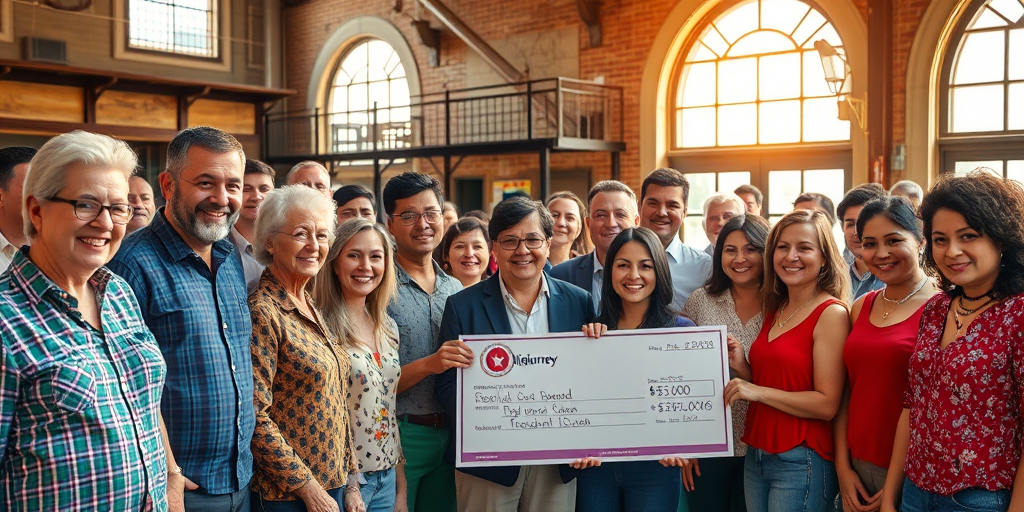I’m sorry for the error. Here is the article specifically focused on the Pharr EDC’s donation to the Region One teacher certification program:
Pharr EDC Donates $21,000 to Region One Teacher Certification Program
Pharr’s Economic Development Corporation (Pharr EDC) has made a significant financial commitment to education, donating $21,000 to Region One’s Teacher Alternative Certification Program. This generous contribution aims to eliminate financial barriers for aspiring educators, especially those from the Pharr community, addressing the pervasive teacher shortage within the Rio Grande Valley.
Addressing the Teacher Shortage
The Pharr EDC, recognizing the impact of educational foundations in community development, has stepped forward to support future educators. This initiative is crucial as it directly confronts the local teacher shortage, a concern echoed across much of South Texas. “We know there’s a shortage of teachers in the state; we need to do everything possible to get teachers back into the classroom,” expressed Victor Perez, Pharr EDC President and CEO, underscoring the urgency of such measures.
The Teacher Alternative Certification Program offers a pathway for individuals to achieve teacher certification without the burden of high costs. This program is increasingly significant as financial barriers often deter talented individuals from entering the teaching profession. With this donation, Pharr EDC not only fosters professional opportunities but also champions a stronger educational infrastructure.
Building on Recent Educational Investments
This donation is part of a broader pattern of increased investment in education across the Rio Grande Valley and South Texas. Recently, over $170 million was allocated to regional schools to enhance resources and infrastructure. Such funding, combined with local initiatives like those from Pharr EDC, represents a comprehensive approach to revamping educational delivery and facilities.
The impact of these investments is palpable in the Valley. Enhanced educational facilities and programs contribute to better learning environments, improved student performance, and heightened community engagement. As local leaders and organizations continue to prioritize education, they mark a significant stride towards addressing long-term economic and social challenges.
Community and Economic Implications
By alleviating certification costs for teachers, Pharr EDC’s donation helps address critical economic disparities. This endeavor aligns with other community-driven initiatives, like the Weslaco Chamber of Commerce’s ongoing donation drive for school uniforms. Both projects aim to ease financial burdens for Valley residents, showcasing a collective resolve towards community resilience and empowerment.
Local real estate agent Maria Diaz recognizes the wider economic implications of such educational investment. “A strong educational system is a cornerstone of a thriving community. By supporting our educators, we’re investing in our children’s future as well as fabricating a more attractive economic climate for potential businesses and residents,” she noted.
Linking Economic and Educational Growth
Pharr EDC’s proactive step also serves to inspire further community-based contributions and encourage unity in tackling regional issues. With U.S. Senate candidate Colin Allred visiting Edinburg this Friday to discuss rising costs in the Valley, education remains a pivotal topic within broader economic discussions.
Education and economic growth are inextricably linked, offering paths to prosperity and mobility. Initiatives like the Teacher Certification Program, supported by community-driven donations, demonstrate a dedication to fostering a stable and educated workforce ready to take on the challenges of tomorrow.
Future Prospects and Engagement
As Pharr EDC’s initiative takes shape, more community members and organizations are expected to follow suit, amplifying the collective impact. By bridging gaps between educational needs and financial resources, these efforts not only address immediate shortages but lay the groundwork for sustainable development.
To keep the community informed and engaged, Region One education representatives plan to hold informational sessions explaining the certification process and the use of donated funds. These forums are valuable for ensuring transparency and fostering community engagement.
In conclusion, the Pharr EDC donation exemplifies a model of local action creating significant community interest and impact within the RGV. As the region continues to navigate educational and economic landscapes, such initiatives serve as critical components of a broader strategy for cultural and fiscal revival. With concerted efforts, Valley residents can anticipate a strengthened educational sector driving future progress and prosperity.







